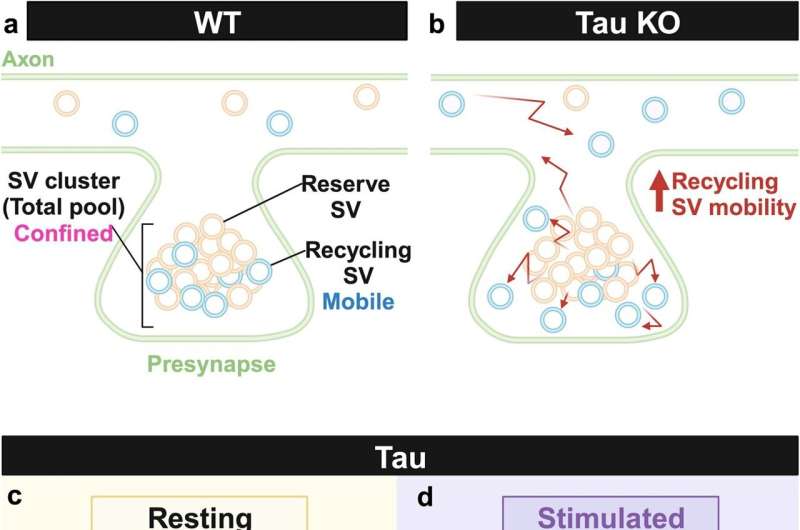This article has been reviewed according to Science X's editorial process and policies. Editors have highlighted the following attributes while ensuring the content's credibility:
fact-checked
peer-reviewed publication
trusted source
proofread
Revealing the behavior of tau proteins at the presynapse through protein mapping

For the first time, University of Queensland (UQ) researchers have shown how the tau protein, known for its role in dementias, behaves where communication in the brain takes place.
The study led by Dr. Ramón Martínez-Mármol and Ph.D. student Shanley Longfield from UQ's Queensland Brain Institute used super-resolution microscopy to visualize individual tau proteins in motion while neurons are "talking" to each other. This findings were published in Nature Communications.
Martínez-Mármol explained that the team's discovery is a big step towards understanding what triggers tau aggregation in disease states like Alzheimer's disease.
"We discovered that tau in a healthy brain controls an important population of vesicles at the presynapse critical for neuronal communication," Martínez-Mármol said. "These vesicles are like the words that neurons use to transmit information to other neurons.
"For the very first time, we've shed light on the mechanism by which tau acts in our nerve cells. By understanding tau's role in a healthy context, we begin to fully understand what leads to the abnormal accumulation of tau in disease."
Longfield said that observing tau's behavior in healthy states provides clues to how these toxic aggregates start to form.
"Studying tau in a healthy brain is more challenging than studying it in a diseased brain, where changes in its molecular behavior are far more prominent and obvious," Longfield said. "But by visualizing tau at the nanoscale and in this context, we can identify the molecular behaviors that precede the formation of toxic protein aggregates in disease."
The team also discovered that tau molecules form tiny condensates, dense gel-like bodies within brain cells, which resemble oil droplets suspended in water.
"What we noticed is that these tau condensates are very fluid-like and dynamic and are tightly regulated by synaptic activity," Longfield said. "In neurodegenerative disorders, these condensates get bigger and denser and eventually form aggregates, which are destructive to brain function.
"Our next challenge is to track diseased tau in brain cells to see how this new function is altered, leading to tau aggregation."
More information: Shanley F. Longfield et al, Tau forms synaptic nano-biomolecular condensates controlling the dynamic clustering of recycling synaptic vesicles, Nature Communications (2023). DOI: 10.1038/s41467-023-43130-4





















